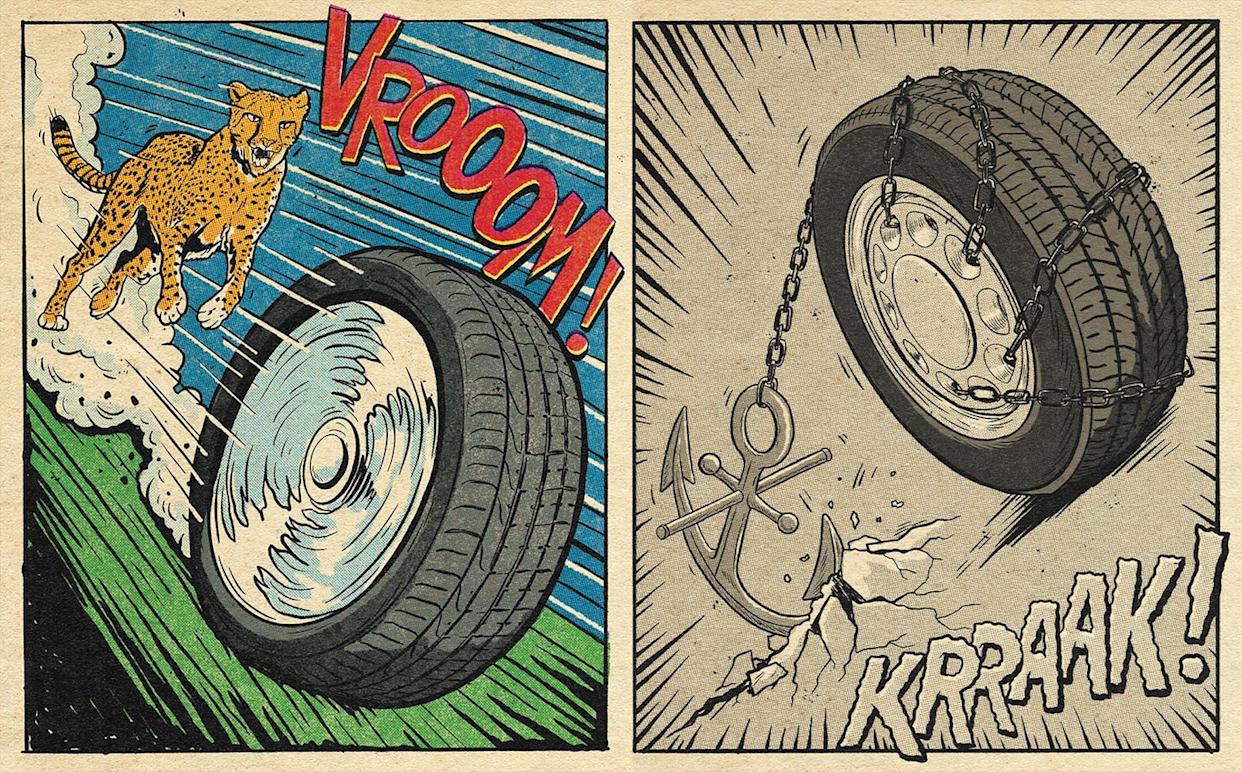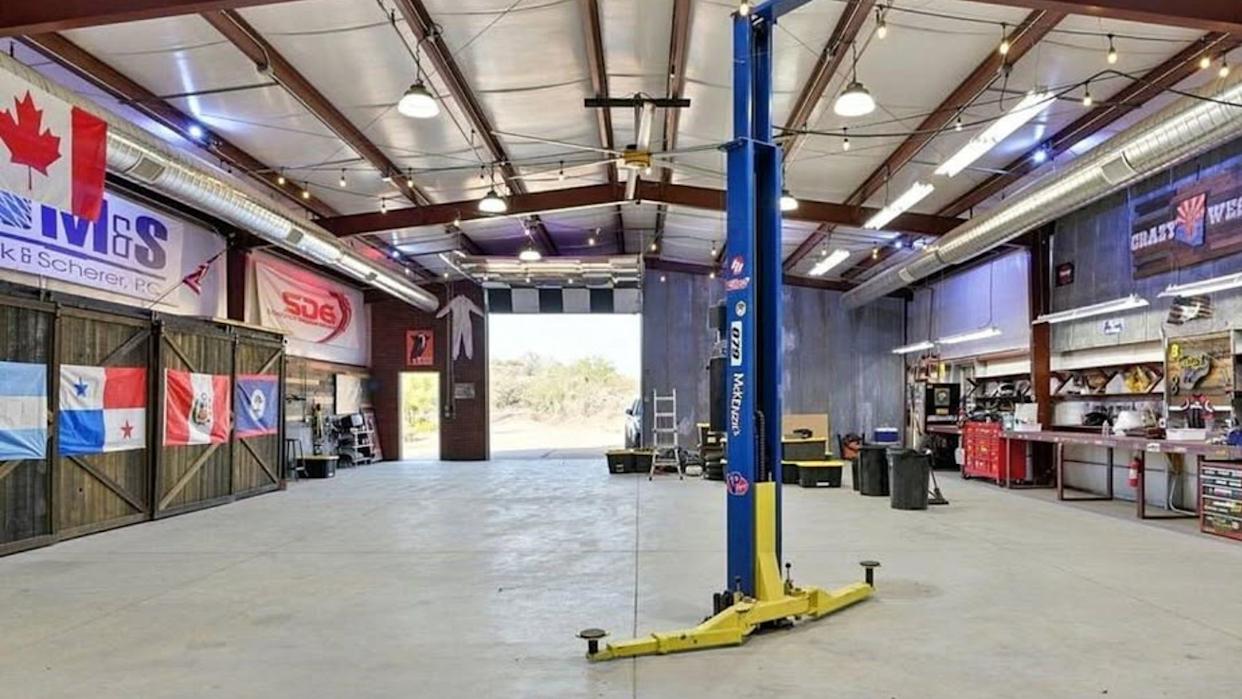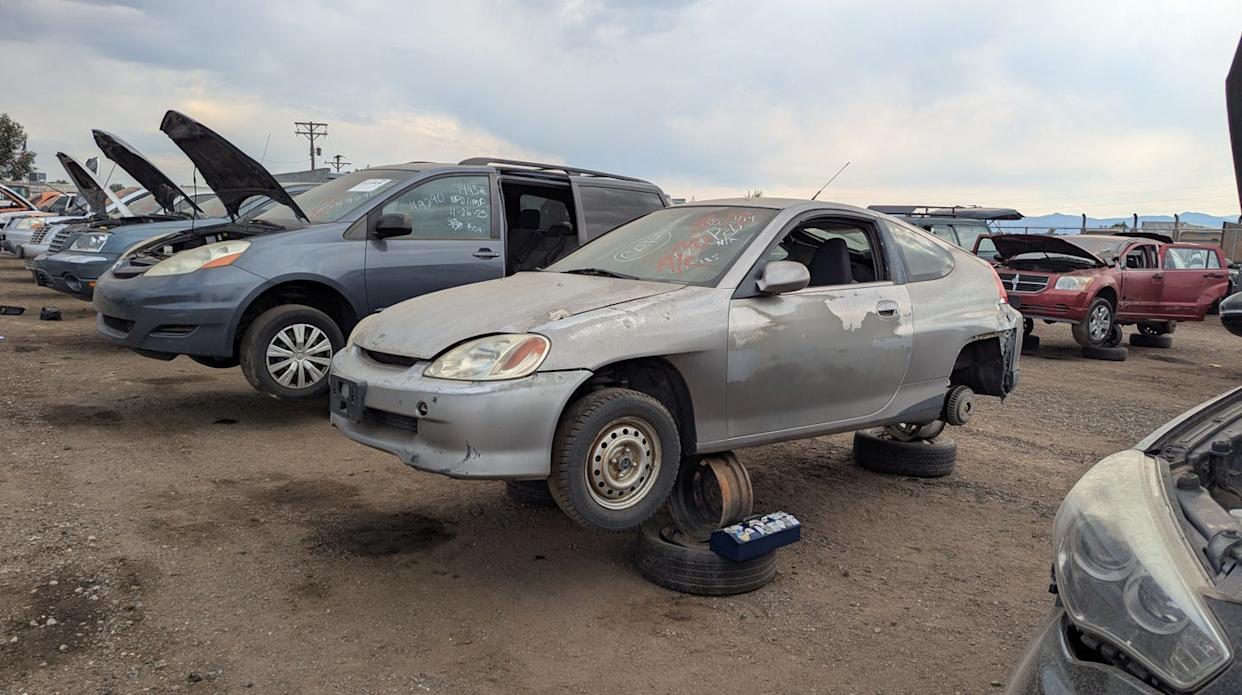

Tires have improved by leaps and bounds over the past few decades to the point where just updating them can drastically increase a car’s performance. In 2024, new Michelin Pilot Sport Cup 2 tires developed specifically for the Porsche Carrera GT helped the car shave more than 15 seconds off its Nürburgring lap time set in 2004. That kind of improvement warrants a deeper dive into the science behind the speed.
This story originally appeared in Volume 30 of Road & Track.
Tires are exceedingly more complicated than they look, with more than 100 different components involved in their construction. It’s the details of these elements, sometimes down to the molecular level, that have made tires faster and more resilient across a wide range of environmental conditions.
Tire components can be separated into a handful of broad categories. The most obvious is rubber, elastomers that come from natural or synthetic sources, usually trees or petroleum byproducts. Another category is structural reinforcements—cords made of steel or textiles, for example. Then there are fillers such as carbon black and silica. Finally, additives include resins, oils, and curing agents.
Covering every facet in depth could easily fill an entire year’s worth of Road & Track issues. So, this exploration sticks to the biggest contributors in the recent advancements in tires.
“The most remarkable changes came from the introduction more than 10 years ago of functionalized elastomers,” says Cyrille Roget, scientific and innovation communication director for the Michelin Group. In simple terms, this allows tire chemists to custom-tune some of the rubber’s characteristics in ways that would have previously been considered impossible. “By adding a function at the end of the chain of elastomers, Michelin was able to completely change the playing field in the domain of adherence, energy efficiency, and wear performance,” Roget says.
Ian Coke, chief technical officer for Pirelli North America, also cites recent elastomer development, adding that Pirelli can now use more specialized compositions specific to the application, whether that’s summer, winter, all-season, or motorsport tires.

Additionally, Coke credits the rapid evolution of tires to new materials and development methods—high-tenacity aramid and hybrid cords, for example, as well as bead technologies that improve rim adherence and thus precision from the tire.
The physical design of tires also plays a part, like the wavy, corrugated shape of the steel belts on the Pilot Sport 4S that bolsters tread stability. New high-tensile-steel cords have allowed for reductions in weight and rolling resistance, as well as improved energy efficiency. Structural improvements give tire engineers more precise control of the contact patch with less heat-inducing flex, reducing wear.
Production equipment is another area of advancement. Michelin and other tire companies have used 3-D-printed molds in recent years to introduce complex tread shapes and voids. New sipe designs reduce deformation to better manage dry performance. In some cases, as a tire wears, additional tread grooves can develop at lower tread depths, allowing for longer use.
None of these improvements, however, would be advancing so quickly were it not for new digital tools that have come into play.

Simulation software used in motorsport—such as in Formula 1, WEC, and IMSA—has made its way to the production of street-car tires, allowing engineers to build them virtually and optimize their contact patch and construction. The pressure to perform in racing has also led to innovations like improved asymmetric sidewall stiffness, belt angles, and cap plies, all things that have migrated to the consumer market. Michelin’s TameTire modeling software goes so far as to simulate a tire’s performance as it is driven, to the point where it can be integrated into full vehicle simulations used by both racing outfits and auto manufacturers.
Coke says the virtual-modeling tools used in F1 have allowed for faster and more precise development cycles in Pirelli’s street tires.
“The most recent generation of the P Zero, for instance, was engineered using advanced artificial-intelligence algorithms and virtual prototyping, allowing engineers to predict tire behavior in a wide range of conditions before physical testing,” he says. “These technologies, combined with improved manufacturing precision, tread-pattern optimization, and low-rolling-resistance compounds, now enable high-performance road tires to match or even exceed the capabilities of supercar tires from two or three decades ago—delivering superior grip, efficiency, and safety.”
There’s no secret sauce to making tires faster, and that’s just as true today as when the Carrera GT was new. Instead, there has been incremental progress in every aspect of building a tire, adding up to overall improvements that result in drastically faster lap times.

A car-lover’s community for ultimate access & unrivaled experiences.JOIN NOW Hearst Owned
You Might Also Like








Comments